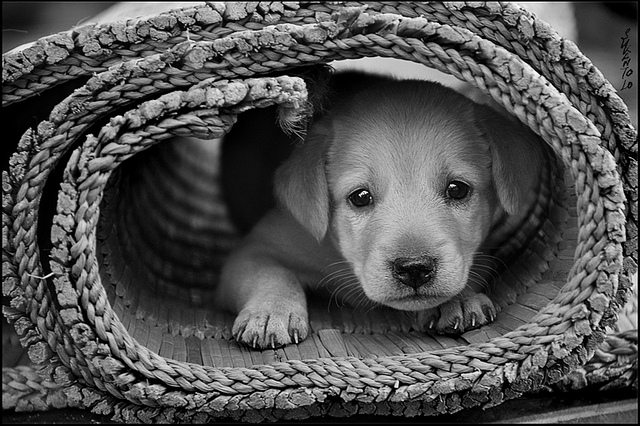
I was not always a dog lover. In fact, for most of my life I found any chance I could to deride the codependent beasts in favor of self-respecting felines. My disdain for dogs was well known, even a badge of my identity.
One afternoon, after a tiring two hours of teaching The Scarlet Letter to high schoolers, I went back to my department office and slumped down at my desk. This photocopied poem lay before me:
Dog’s Death
She must have been kicked unseen or brushed by a car.
Too young to know much, she was beginning to learn
To use the newspapers spread on the kitchen floor
And to win, wetting there, the words, “Good dog! Good dog!”
We thought her shy malaise was a shot reaction.
The autopsy disclosed a rupture in her liver.
As we teased her with play, blood was filling her skin
And her heart was learning to lie down forever.
Monday morning, as the children were noisily fed
And sent to school, she crawled beneath the youngest’s bed.
We found her twisted and limp but still alive.
In the car to the vet’s, on my lap, she tried
To bite my hand and died. I stroked her warm fur
And my wife called in a voice imperious with tears.
Though surrounded by love that would have upheld her,
Nevertheless she sank and, stiffening, disappeared.
Back home, we found that in the night her frame,
Drawing near to dissolution, had endured the shame
Of diarrhea and had dragged across the floor
To a newspaper carelessly left there. Good dog.
—John Updike
Mark, a quiet, middle-aged English teacher who sat nearby, briefly made eye contact with me, then looked back down at his stack of papers.
“I don’t like dog poems,” I said.
“Just read it,” he replied.
So I did. I read the poem and set it back down. “Not gonna work,” I said, and rolled my eyes.
What I didn’t tell Mark, and what I didn’t admit to myself for several years, is that the poem did work on me, first with that immediate wallop of guilt I felt as I slipped the poem in the recycling bin and avoided the expectant gaze of dogs for the next several days, then with the slow unraveling of images deep inside me.
The ruptured liver. The heart lying down. The weak attempt at a bite.
And, of course, the splattered newspaper.
In his poem “Introduction to Poetry,” Billy Collins tells us to “walk inside the poem’s room/and feel the walls for a light switch.”
That switch is the “ah-ha moment” in a poem, the moment that shocks us awake to a feeling or idea, illuminating the poem as a whole. In “Dog’s Death,” the rather embarrassingly unpleasant but beautifully loving picture of a dog trying to please his owners up to the moment of death lit up the entire poem for me. Strange as it sounds, a soiled newspaper incarnated the fierce love between a family and their pet. This image slowly chiseled away at my heart, even when I tried to forget the poem.
I understood the truth in this image years before I would realize that I would not only tolerate, but need dogs in my life, that what I was maligning about them–their seemingly naive and insistent desire to please–was what made them tender companions.
It would take many positive encounters with dogs, family discussions, and compromises to reach the decision to adopt Toby, a rat terrier, from a rescue organization. But the work started years before, with a poet’s moving images and words turning on the light.
Good poem.
Photo by Sukanto Debnath, Creative Commons, via Flickr. Post by Tania Runyan, author of How to Read a Poem.
